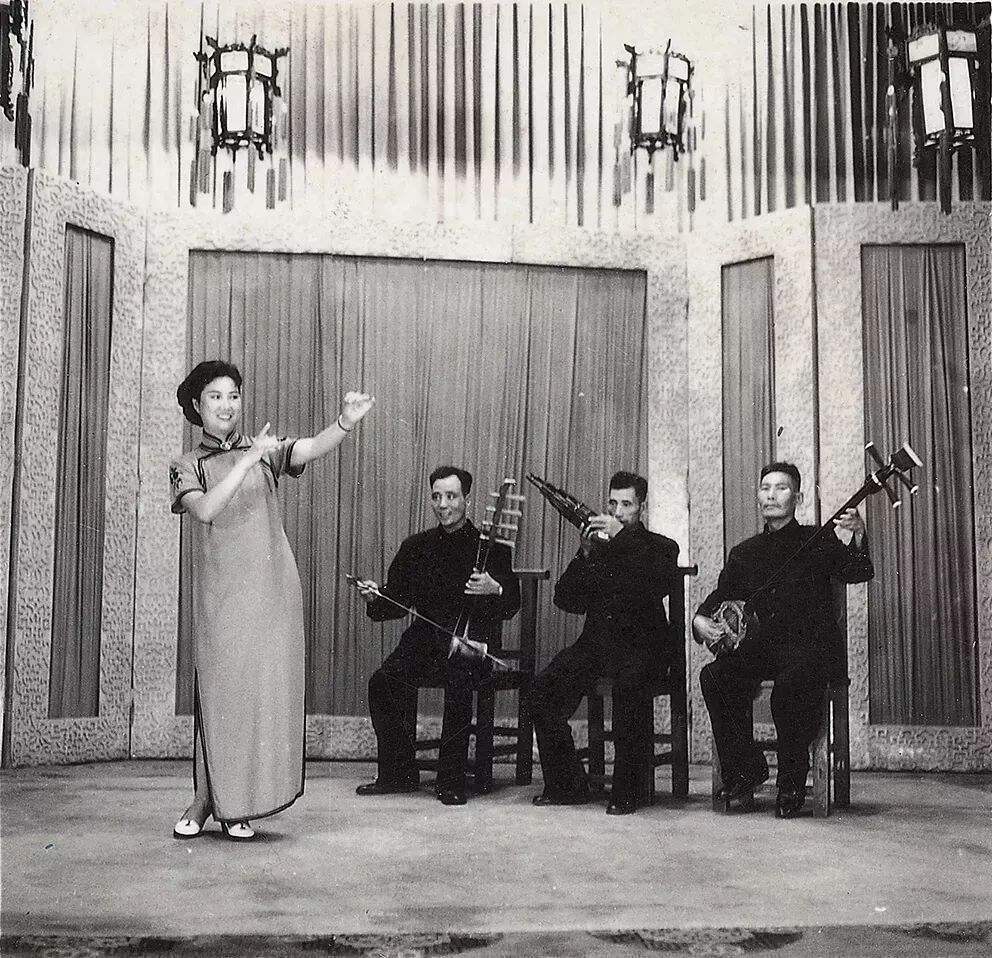
Shidiao: the Opera that Brings Reputation to Tianjin as “City of Folk Arts”
Tianjin Shidiao (天津时调) is one of the most representative forms of folk art in Tianjin. It is performed in the local dialect, making it easy to understand, and features a lively, resonant melody that captures the essence of Tianjin's rustic charm. The performances typically involve one or two singers accompanied by instruments like the Dasanxian (大三弦, a three-stringed instrument) and Sihu (四胡, a traditional Chinese four-stringed instrument). The repertoire is quite diverse, incorporating many local folk melodies and tunes from other regions.

Historically, Shidiao was regarded as a lowbrow form of entertainment, often performed on the streets and not recognized as a legitimate art form. Its popularity surged around the Dragon Boat Festival and continued until the Chongyang Festival (also known as the Double Ninth Festival), a time for worshipping longevity and good fortune.
By the late Qing Dynasty and early Republic of China period, Shidiao had become popular across four main areas of Tianjin: Yixingbu( 宜兴埠) and Dingzigu(丁字沽, commonly known as "Beiliu'er" "北溜儿"); Shenzhuangzi (沈庄子) and Guozhuangzi (郭庄子) in Hedong District; Xichenggen(西城根) and Xibeijiao (西北角)in the western part of the city; and central Tianjin.
Among these, the central area saw the most significant growth and lasting influence. The performers, known as "piaoyou" (票友), were often laborers and tradespeople, including porters, barbers and craftsmen, who contributed to the rich tradition of Shidiao.
The 13th day of the seventh lunar month marks the birthday of Luozu(罗祖), the patron saint of barbers, and is a significant occasion for Shidiao performers. Celebrations often involve a half-day holiday for barbers, who enjoy special meals and invite performers to sing Shidiao. On this day, the sound of Shidiao echoes throughout barbershops across the city. Similarly, the 15th day of the seventh lunar month, known as the Ghost Festival, features performances by Shidiao artists as part of the Yulanpen Festival, attracting large crowds.
In the early 20th century, as various performing arts flourished in tea houses, professional female Shidiao artists began to emerge. One notable figure was Gao Wugu (高五姑), a former courtesan who gained fame in the 1920s for her captivating performances. She developed a unique singing style known as "geda qiang" (疙瘩腔), which became highly popular in Tianjin.
After the establishment of the People's Republic of China, the Tianjin Broadcasting Arts Troupe invited scholars to explore the history and artistic features of Shidiao, officially naming it Tianjin Shidiao. Prominent artist Wang Yubao (王毓宝) made significant contributions to its reform, purifying traditional lyrics and melodies, eliminating undesirable elements, and enhancing the performance environment. She improved accompaniment methods, introducing instruments like the yangqin (扬琴, a traditional Chinese hammered dulcimer) and sheng (笙, a traditional Chinese mouth-blown free reed instrument) to create a lively and harmonious atmosphere.
Initially, Shidiao thrived in areas with large populations of working-class citizens, such as Nanshi(南市), Hedong(河东), Hongqiao District, and Heping District. However, by the 1940s, its popularity began to decline. After the founding of the new China, reforms revitalized Shidiao, creating many quality performances.
Despite facing challenges during the early 1960s, Shidiao experienced a resurgence after the reforms of the late 20th century, with traditional tunes making a comeback. However, it now faces new challenges and a potential crisis of survival, calling for support and preservation efforts to ensure its continuation.
Related articles
-
 Echoes of Concession: The Cultural Legacy of Tianjin's Foreign Enclaves
Echoes of Concession: The Cultural Legacy of Tianjin's Foreign EnclavesMore
-
 Clay Sculpture Legacy: the Century-old Tradition
Clay Sculpture Legacy: the Century-old TraditionMore
-
 Tianjin's Canal Culture: A Vital Hub of the Grand Canal System
Tianjin's Canal Culture: A Vital Hub of the Grand Canal SystemMore
-
 Xiangsheng: the Laughter and Wisdom of Tianjiners
Xiangsheng: the Laughter and Wisdom of TianjinersMore
-
 Tianjin Song Art Troupe: the Storytelling Accompanied with Rhythmic Drums
Tianjin Song Art Troupe: the Storytelling Accompanied with Rhythmic DrumsMore